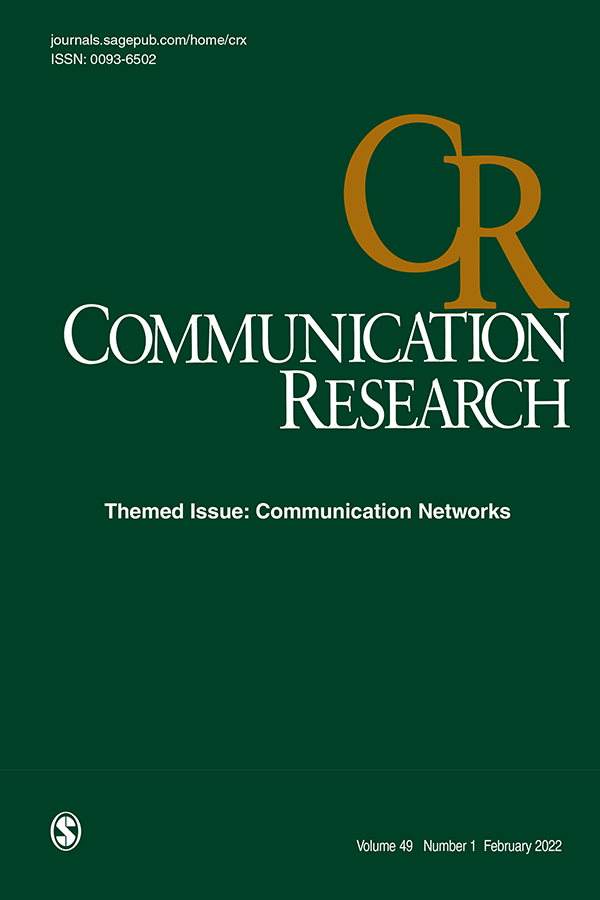Not Bowling Alone: Revisiting Partisan Types and Participatory Behaviors Using the Communication Mediated Model
IF 3.2
1区 文学
Q1 COMMUNICATION
引用次数: 0
Abstract
Drawing on the two-wave 2020 American National Election Studies (ANES) survey, this study revisits partisan types by categorizing individuals’ party identification and positions on party-divided issues. A Latent Class Analysis reveals six types of partisans, which were further clustered into three types: polarized partisans (i.e., polarized Democrats and polarized Republicans, 47.85%), incongruent partisans (i.e., conservative Democrats and liberal Republicans, 28.23%), and floating citizens (i.e., hesitant citizens and apathetic citizens, 23.92%) based on the partisan typology proposed in this study. Employing the O-S-R-O-R model, this study found that polarized partisans (O), who are the most politically active citizens, are more likely than incongruent partisans and floating citizens to seek pro-attitudinal news on multi-platforms (S), then to discuss politics (R), then to be politically knowledgeable (O), which finally leads to higher levels of political participation. The results highlight a worrisome tendency in US politics as participation is largely by biased polarized partisans. Nevertheless, incongruent partisans also have the potential to make contributions to both deliberative and participatory democracy because they are also politically active. Their discussion and participatory behaviors can be attributed to their mixed issue positions and counter-attitudinal news consumption on multi-platforms.不只打保龄球:用沟通中介模型重新审视党派类型和参与行为
根据2020年美国国家选举研究(ANES)的两波调查,本研究通过对个人的党派认同和对党派分歧问题的立场进行分类,重新审视了党派类型。潜在阶级分析揭示了六种类型的党派人士,并将其进一步分为三种类型:两极分化的党派人士(即两极分化的民主党人和两极分化的共和党人,47.85%)、不协调的党派人士,以及基于本研究中提出的党派类型的流动公民(即犹豫不决的公民和冷漠的公民,23.92%)。采用O-S-R-O-R模型,本研究发现,两极分化的党派人士(O)是政治上最活跃的公民,他们比不协调的党派人士和流动公民更有可能在多平台上寻求支持态度的新闻(S),然后讨论政治(R),然后了解政治(O),这最终导致了更高水平的政治参与。这一结果突显了美国政治中一种令人担忧的趋势,因为参与的主要是有偏见的两极分化的党派人士。然而,不协调的党派人士也有潜力为协商民主和参与民主做出贡献,因为他们在政治上也很活跃。他们的讨论和参与行为可以归因于他们在多平台上的混合议题立场和反态度新闻消费。
本文章由计算机程序翻译,如有差异,请以英文原文为准。
求助全文
约1分钟内获得全文
求助全文
来源期刊

Communication Research
COMMUNICATION-
CiteScore
17.10
自引率
0.00%
发文量
20
期刊介绍:
Empirical research in communication began in the 20th century, and there are more researchers pursuing answers to communication questions today than at any other time. The editorial goal of Communication Research is to offer a special opportunity for reflection and change in the new millennium. To qualify for publication, research should, first, be explicitly tied to some form of communication; second, be theoretically driven with results that inform theory; third, use the most rigorous empirical methods; and fourth, be directly linked to the most important problems and issues facing humankind. Critieria do not privilege any particular context; indeed, we believe that the key problems facing humankind occur in close relationships, groups, organiations, and cultures.
 求助内容:
求助内容: 应助结果提醒方式:
应助结果提醒方式:


